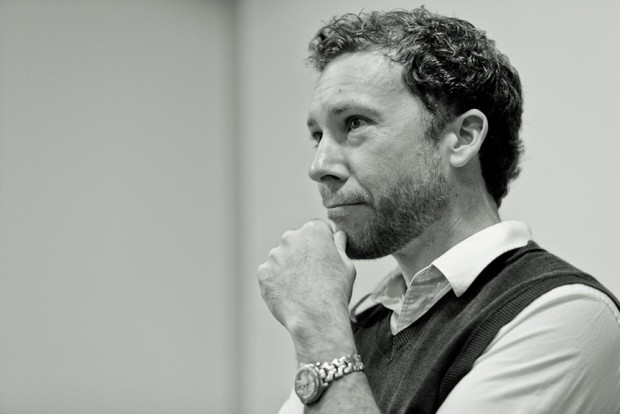
Bryan O'Neil Hughes, Senior Product Manager for both Photoshop & Bridge, pictured above, takes us behind the scenes at Adobe to show us the making of the latest version of Photoshop
As I'm writing this, we've just released a free public beta of Photoshop CS6. This is only the second time that we've given the world an opportunity to "kick the tires" before we ship. I could give you some great tutorials and help you understand just how to use the incredible feature-set to its fullestâ”but then so could a lot of people. In fact, immediately following this article, you'll find an entire section dedicated to all the new features in Photoshop CS6. Since you're reading Photoshop User, you already know that NAPP and major conferences like the twice-annual Photoshop World are great places to learn from the best (and even hacks like me), so I wanted to try something different. I figured I'd give you a unique insight into how we came up with Photoshop CS6 and what goes into a release of Photoshop. I feltthought the best way to approach this was in an interview format andto address all the commonmost popular questions I get about how we build a releaseâ”I get these types of questions a lot.
Coming off of Photoshop CS5, our most successful release to date, we were all wondering, "How on earth are we going to top that?" Thankfully, with the 64-bit transition behind us, we had the most precious commodity that a software development team can ask forâ”time.
So, where do you start when it's time to work on the next version of Photoshop?
Planning a release is equal parts doing what you need to do (OS changes, performance tuning, integration with other products, camera support, etc.); what your customers want you to do (both the large requests and the small ones); what the team wants to do (emerging technology from our labs, licensed technology, pet projects, and a bucket of "things we'd really like to fix"); and all of what you started but didn't finish in the prior release. With a very diverse and vocal user base worldwide, ideas are never the problem. The toughest part about scoping a release is choosing where to place our bets and acknowledging that some won't pan out, so prioritizing features ends up being extremely important. For every feature that we green light, there are dozens we'd love toâ”it all comes down to time.
Do you worry that you'll ever run out of ways to improve Photoshop?
Never. When I started on the Photoshop team, digital photography meant drum scans and Photo CDs; the Web was in its infancy; no one brought laptops to meetings because there was no Wi-Fi; and mobile devices were limited to phone calls and weren't yet the norm. Technology changes every day. Every new feature on a camera or in a computing platform is an opportunity for us. I think of Photoshop as an imaging platform; images (any kind: still, video, 2.5D, 3D) can come from anywhere and go to anywhere. Photoshop is what happens on the way. Photoshop no longer means just the desktop either. Our technology can be found on the Web and across platforms on phonessmartphones and tablets. I can honestly say that there has never been a more exciting time for Photoshop. Images are everywhere.
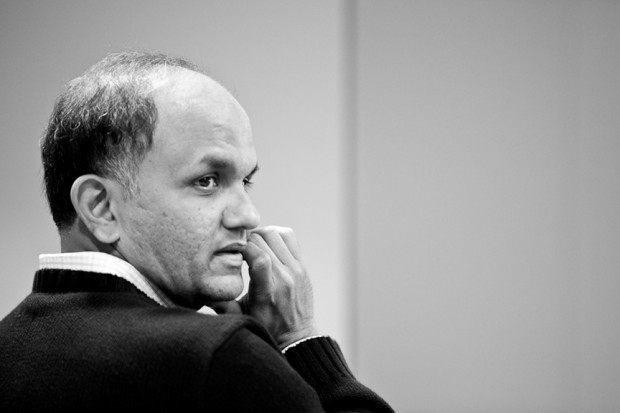
Adobe CEO, Shantanu Narayen
How many people are on the Photoshop team? What do they all do?
There are roughly 100 on the core Photoshop team (individuals devoted solely to Photoshop and Photoshop Extended), which when you consider that the application appears in every suite and is translated into 25 languages, is pretty impressive. While our headquarters is in San Jose, California, and houses the bulk of the team, we have team members in San Diego, Arizona, Colorado, Minnesota, Florida, India, China, and beyond. The core team is broken into several pieces:
Management: Nearly all of us came up through various parts of the organization or played individual roles on other teams at some point.
Engineering: The magicians who write the code. These water-walkers comb through millions of lines of legacy code and push the framework to the absolute limit.
Quality Engineering: The tireless testers who assure that everything works (the new features and the old ones). These talented folks are paid to break Photoshop. Tens of thousands of bugs are logged, tracked, and fixed in a regular cycle.
Automation: These folks straddle coding and testing as they write and run complex scripts that stress-test each fresh build of Photoshopâ”computers testing computers.
Localization Engineering: The core team is made up of people from all over the world, but these team members are experts in multiple languages and assure that foreign builds are translated correctly and take into account any cultural nuances.
Experience Design: Adobe has a large team of experience designers. We have two dedicated entirely to Photoshop. Matthew Bice and Tim Riot are incredibly hard-working, creative guys and are tasked with an incredibly difficult jobâ”touching an application used by everyone in their industry and wanting to leave their mark and push the envelope, but being constrained by a very well-established product and more than two decades of legacy code.
Program Management: Steve Snyder singlehandedly wrangles our schedule, milestones, and various check-ins. Steve jumps from meeting to meeting all day and makes sure that we are where we need to be. Steve has tenacity and an obsession with doing things right (he spent more than a decade in Quality Engineering). Getting more than a dozen suite applications out the door at the same time is a very big juggling act. Steve and others are invaluable here.
Evangelists: Julieanne Kost and Russell Brown are legends in their field:. Julieanne is one of Fast Company's "most creative people," and Russell is an Emmy Award winner, respectively. Both are in the Photoshop Hall of Fame. Julieanne and Russell travel more than not and share an insatiable curiosity and creativity. They excel at inspiring and teaching, and the team learns a great deal from them about what we can improve and how.
Marketing: Jim Heiser and Allison Goffman are dedicated to the Photoshop team and are very passionate about communicating its abilities in a fresh, exciting, and engaging way.
Customer Advocacy: Cari Gushiken and Jeff Tranberry founded this new team to assure that we listen and respond to our user base all over the world. From problem solving to social media, these two cover a tremendous amount of ground. If you've ever found an answer in a forum or seen a video on Facebook or YouTube, one of them was probably involved.
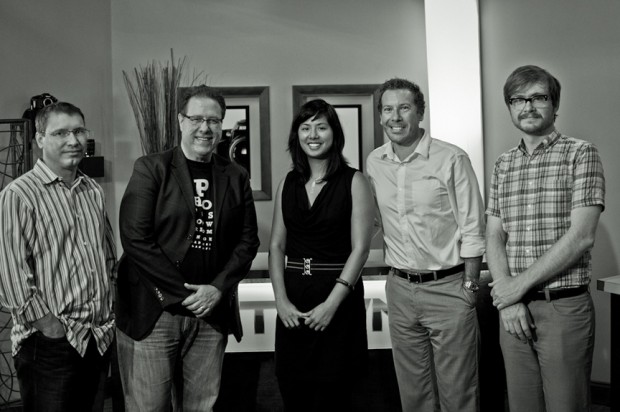
Jim Heiser (marketing), Scott Kelby (NAPP President), Zorana Gee (product management), Bryan O'Neil Hughes, and Matthew Bice (experience design) visit NAPP for an in-depth discussion about what would become Photoshop CS6
The team comes from every corner of the globe and is educated as much in liberal arts as computer science. Many of our team members (like myself) used Photoshop professionally before coming onto the team; others only touch it at work and wouldn't call themselves users. None of us would ever say that we're expertsâ”there's an unwritten rule about that. We all share one common ingredient, passion. That passion created the world standard in digital imaging and it continues to. If you ever find yourself outside of Adobe's headquarters at night, look for the floor with the most lights onâ”that's W10WT10 (the West Tower, 10th floor)â”that's passion.
PHOTOSHOP CS6 BY THE NUMBERS
- Lines of code: 4.5 Million+
- Icons replaced for new UI: 1,900
- Cursors replaced for new UI: 250
- Menu items removed from CS6: 47
- Features brought back from CS4: 3 (PDF Presentation, Contact Sheet II, and Lighting Effects)
- Languages supported in CS5: 23
- Languages supported in CS6: 26
- Changes to Crop tool: Around two dozen
- Increase in feature changes over CS5: +62%
- JDI features in CS5: 30+
- JDI features in CS6: 65+
Can you explain product management's role?
Not easily. I still haven't explained it to my family and friends. In essence, we have two lives: Outward-facing: We speak, lead workshops and photo walks, conduct press interviews, give demos, meet with partners and developers, and do a lot of research. Zorana Gee and I began on the same day, nearly 13 years ago as Quality Engineers, so we both come from a strong user background (in my case, even before Adobe). We're also both authors; we represent the product to our users, but we're users ourselves.
Inward-facing: We take what we learn in the field combined with a mountain of data to inform and direct our future course. This side touches just about every part of the company, from legal to human resources to finance, right up to the CEO.
No two days are ever the same and we don't sit still for long. I'm in my office maybe an hour or two a day; the rest is spent in meetings or on my way to or from somewhere.
The Photoshop product management team (which also oversees Extended, Bridge, and Photoshop Touch) is comprised of Zorana, Stephen Nielson, Pam Clark, Maria Yap, and me. Zorana and I each owe a tremendous debt to Pam and Maria. They saw something in us and groomed us into product managers. Our general (he's actually a VP) is Winston Hendrickson. He oversees the whole team, and is both a prolific shooter and active user himself.
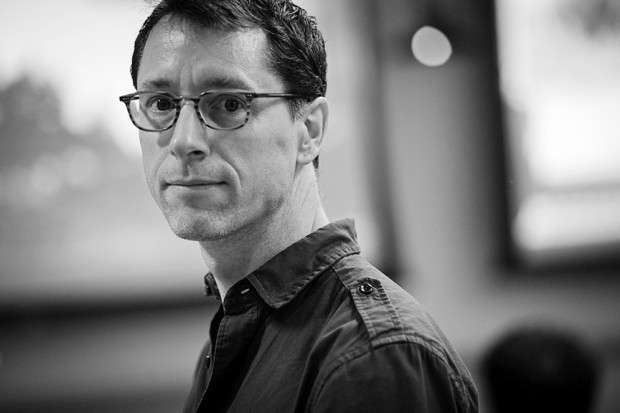
Director of Photoshop Engineering, Dave Howe
Does the Photoshop team work with Lightroom and Elements?
Absolutely. Tom Hogarty manages Lightroom, but he also handles Adobe Camera Raw (as the Develop module uses that same engine), so he's associated with Photoshop by virtue of that. I've been a pinch hitter for the Lightroom team since pre-1.0 and have written books and evangelized it. Tom and I are both based on W10WT10, so we see a lot of each other and the teams collaborate regularly.
Elements began on W10WT10, as well. While it made huge leaps from the old Photoshop LE (it was originally based off of that and the Photoshop code), it still shares a great deal with Photoshop. The street is two ways, though. Photomerge, Red Eye, and other features began in Elements before working their way over to Photoshop. As more and more new users find their way to Photoshop, we count on the Elements guysfolks like Product Manager, Bob Gager, for lessons in how to improve usability.
Which was harder, CS5 or CS6?
Photoshop CS5 was a backbreakermet with great challenges. Getting an app (which was nearly two decades old at the time) to behave in a cross-platform, native 64-bit environment like it was meant to, and introducing game-changing features while speeding up and remaining consistent with what we'd given people priorâ”that was extremely tough on the team. There's a great video that chronicles that cycle on our YouTube channel: http://kel.by/HiaCUc.
In the end though, it was worth it. CS5 has been very well received. The toughest part about CS6 was following CS5 with something even better.
Did you follow it with something better?
Absolutely, hands-down. The release is bigger: there are 62% more new features in CS6 than in CS5!. There are more little things, too, with nearly twice as many JDIcustomer-requested features (JDIs) fulfilled (we did 65). CS6 is faster; we're pushing more through the GPU than ever before. CS6 is an incredibly deep release, but it's also very, very focused. We conducted more research and had more ways of listening to our customers than ever before. When I think about what we did for designers, what we did around video, I'm confident that we solved some huge problems, and in the case of video, presented a solution to a large group of people that wanted to do something but were afraid to.
You mentioned delivering features based upon customer wants. How do you gauge those?
I honestly don't think we'd be around after all of these years without such strong, passionate support from our customers and the team's willingness to listen to it. We have more ways than ever to listen to our customers:
Prerelease: Historically, we've had a variety of waves to our prerelease program: we bring select individuals early on and gradually expand to larger groups (for instance, last time we welcomed NAPP members to help us test CS5). The main idea here is to get feedback on what we've done and help us test it, but invariably we respond to feedback with feature changes and additions to our original plans. Future work is also inspired by that feedback.
User research: We have a small team of dedicated researchers at Adobe. These people coordinate visits with all sorts of users and prepare detailed questions, mock-ups, and exercises to draw information for future products and features. For me, the most interesting thing about this process is how subtle the researchers are; they're constantly listening, observing, recording, and examining, but to watch them, you'd think they were just peering over someone's shoulder, watching them make something beautiful. For more on this process and the role that it played in CS6, see "User Research: Video" on page xx.
Forums: Adobe.com is home to user-to-user forums for every product. From the first day that we launch, many team members are actively participating in these. Get Satisfaction (www.getsatisfaction.com/adobe) is a recent resource for providing quick, detailed, accurate information on problems. Our Chief Customer Advocate, Jeff Tranberry, spends an incredible amount of time on these and more. While many questions are how-tos, ideas and solutions to existing problems naturally spring from these discussions.
Field: Our evangelists spend all day, every day getting people excited about our products. They also field a lot of questions. Our salespeople work with diverse clients on a daily basis and have firsthand knowledge of customer pain points. Anyone in the field representing our products will gather a lot of information about what we do well, what we could do better, and what we aren't doing but should. We listen closely to all of this.
Luminaries: From authors to educators to professionals in each field that Photoshop touches, we listen very carefully to the people who build their careers on Photoshop. Nearly all of these are involved in our prerelease program. They're a regular litmus test to make certain we're on the right track.
NAPP: In addition to visiting NAPP headquarters regularly, we trade a lot of email and phone calls with the Photoshop Guys. Every Photoshop World, Scott Kelby and I share a tradition: no matter how busy we are, we find time to sit down to breakfastâ”just the two of us. For me, this time is golden. Scott is always very candid about assessing the landscape and providing insight into alarms and opportunities. The NAPP members who have been involved in our prerelease and have helped with the public beta are the cream of the cropâ”power users who catch nasty bugs and illuminate opportunities to improve our wares. If you're reading this, on behalf of the whole team, thank you!
Social media: Facebook has given us access to more than four million passionate fans of Photoshop, stretched all over the globe. These people have all sorts of ideas and guidance. Half a dozen of us engage with them daily. Cari Gushiken and a number of others assure that the quality of information we deliver here, on Twitter, YouTube, Google+, and beyond is of the highest quality and that the conversation is as much listening as talking.
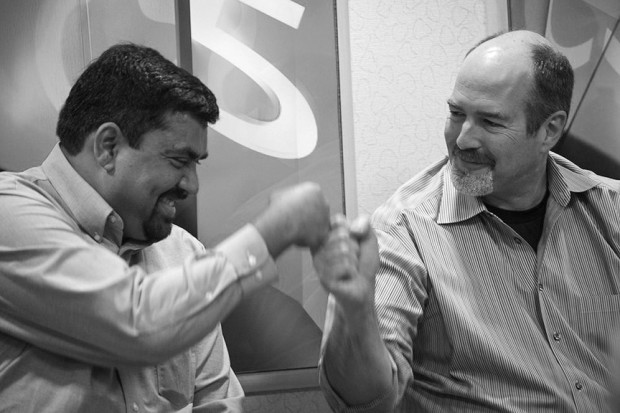
Photoshop Hall-of-Famer, Seetharaman Narayanan, and Digital Imaging Vice President, Winston Hendrickson, acknowledge some miracle that Seetha has performed
There are many others, but those are the big ones. We have more ways than ever of listening and that's why we wanted to share CS6 in public beta, as a thank you to all of the people who helped us build it.
USER RESEARCH: VIDEO
By Graeme Mott
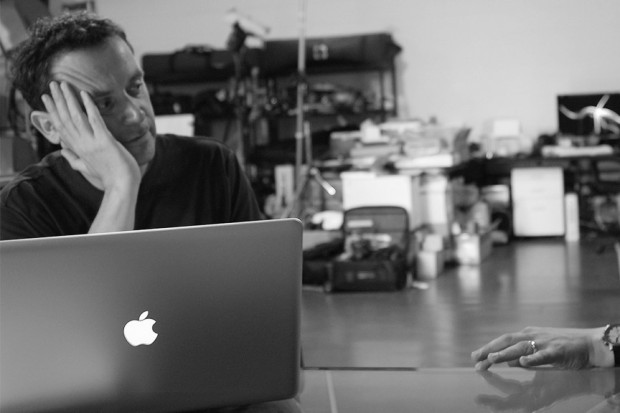
Graeme Mott, Senior User Researcher, hard at work
Photoshop CS6 had been really intense, with a total of six separate research studies that went both broad and deep. There are quite a few personal highlightsâ”getting back to basics and focusing on a new crop workflow, improvements to layers, text styles, and a revamp of 3Dâ”but without a doubt my favorite is the overhaul of the video features.
To tell the full story, I have to go back to CS5 in early 2009 and a series of visits with photographers near Monterey, California. The Canon 5D Mark II was out and getting a lot of attention, but were photographers really going to get into video? After a few visits, it became clear there was interest in video, limited, but interest nonetheless. Was it feasible that as more photographers had HD video-capable DSLRs that they would at least try it out for such things as short clips of key moments at a wedding: the exchange of rings, the first kiss, or a more atmospheric clip to capture the mood of the occasion?
Video didn't make the cut for CS5. We were quite a way into the release and there were too many other features that were deemed higher priority. The good news is there's always another chance with the next version. For each release of Photoshop, we conduct early high-level user research focused on strategy and the direction of the product. In subsequent research, we drop down into the specifics of what exactly is the user need for a given area such as video, 3D, or design tools, and what real-world problems can be solved and for whom. In addition, we have many ideas from the team as well as research projects from our Advanced Technology Labs that we show and explore to see what resonates and why. While it might sound abstract and dry, that couldn't be further from the truth. The opportunity to spend time with our customers, trying to see the world through their eyes, understanding what it means to be a photographer or a designer, the challenges they face, and seeing the amazing work they pro- duce are all sources of inspiration.
Soon after starting the high-level research, it became clear that video was gaining much more attention and interest than earlier in the year. Many of the customers we met wanted to explore video in some manner, but we kept hearing how video apps were really hard to understand. By now the body of evidence was mounting that there was a real opportunity for us to make our custom- ers successful with video in an environment they already understood, namely Photoshop.
For the next study, I had Alan Erickson, the engineer for our video feature, join me along with Bryan and our designer, Matthew Bice. For a week we traveled around visiting photographers who had already had some success with video, though nearly all had horror stories of get- ting started. However, once over that hump they found a new medium to express themselves while retaining a photography-based perspective. We saw many beautiful and inspirational movies. A market was appearing and the world of video and photography no longer seemed quite so far apart. For some, adding video to their offering meant staying relevant and competitive.
We had now established a growing interest and the motivations behind it. We understood how challenging those initial forays into video were for photographers and why. We also knew from our analysis what was the basic set functionality needed to make most of the videos we had seen: a few video tracks, audio, transitions, performance, text and image handling, the power of Photoshop, and most importantly, ease of use.
Since we released the public beta, I've been delighted by the many positive comments and reactions to the video fea- tures. It's not easy getting something into Photoshop, and it took a lot of determination to make it happen. There's no doubt staying close to our customers, and being inspired by their creativity and artistry, made it a whole lot easier and worth the effort. We hope you agree.
GRAEME MOTT is a Senior User Research Lead in the Experience Design group's Research and Strategy team. He has been at Adobe for nearly seven years; the past three he has spent leading the Photoshop and digital imaging research team. If you are interested in participating in a study, please take a few minutes to complete this short survey registering your interest: Adobe.com/userresearch



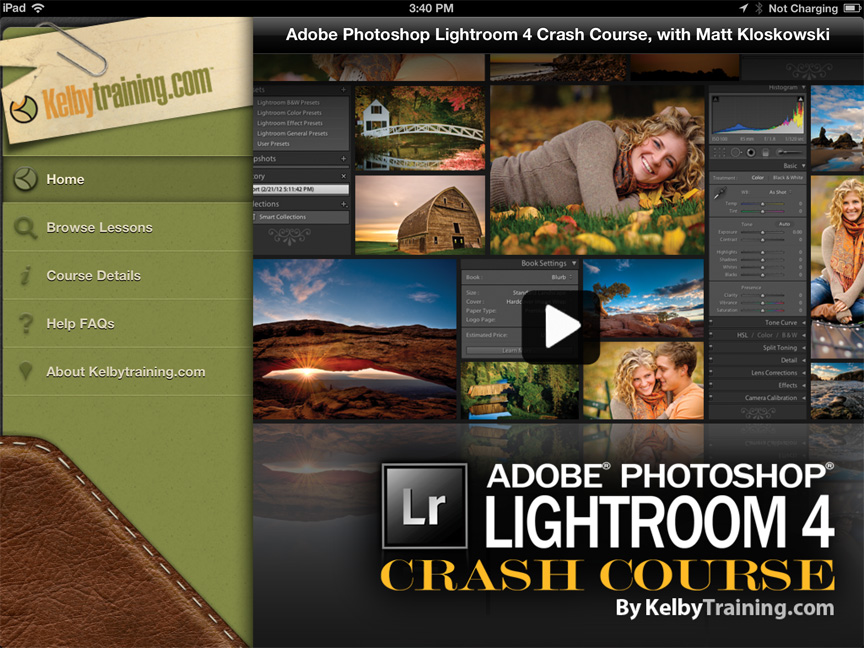

One of the post posts in the recent past. Thank you!
One of the BEST posts in the recent past.
Thanks for the very interesting post. Timely too, as I found and read it whilst waiting for my CS6 upgrade to download!
Very nice to get some insight on whats going on behind the scenes.
I’d wish to know how looked the Adobe Fireworks CS6 development process “behind the scenes”.
I bet I’ll never know…
Unlike Scott’s many other books, the binding on “The Adobe Photoshop CS6 Book for Digital Photographers” is defective. Â Within a week of purchase and without having flexed the binder more than simply turning pages, numerous sections of the book are falling out. Â Just thought you’d like to know. Â John